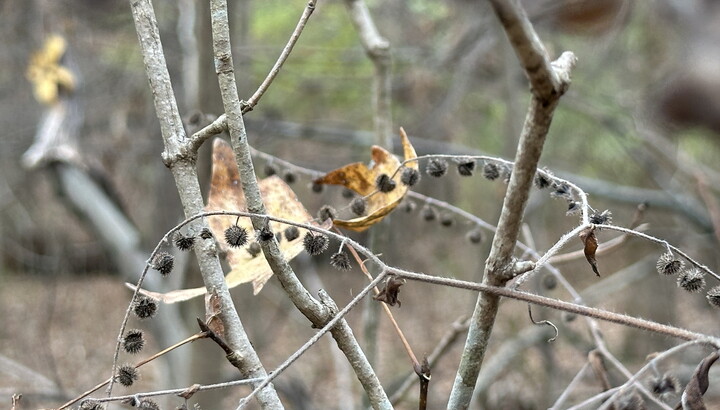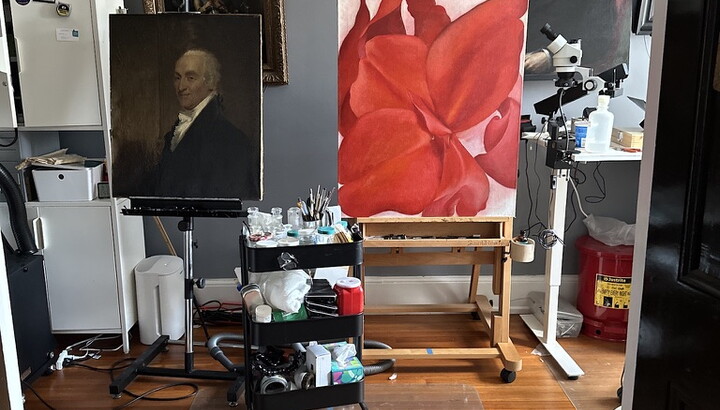The Carter Blog
Carter ARTicles
The act of photography
Jan 21, 2022
As the Carter’s collection photographers, we often bring our visions to the photo studio but not our voices. At least not our artistic voices. Our job is to use best practices to light, compose, and translate works of art into neutral documentary photographs. When photographing three-dimensional objects, we choose angles to reveal a characteristic shape or silhouette. It is not our position to add layers of meaning, but to capture what is already there. We provide a neutral viewing ground in a 2D frame, where you can interpret the artist’s intention.
Stephanie Syjuco, an artist from Oakland, California, spent a week in June 2021 at the Carter researching our collection for her upcoming exhibition Stephanie Syjuco: Double Vision. She drew some of her inspiration from our strong holdings of Remington bronzes and was given permission by our curatorial staff to photograph these artworks in our studio.
She studied how we photographed these western bronzes and then introduced her own ideas and materials that go beyond strict documentation. As an artist she had the freedom to play with meaning in ways a collection photographer cannot. Ideally, the only human touch a collection photographer leaves in the frame is a clear rendering of the artist’s touch.
Syjuco proceeded to photograph the bronzes on a rippled black cloth so that the sculpture would blend and be obscured into the background. To a collection photographer, this method does not give enough visual separation of the object to the backdrop. We opt for non-textured white or gray paper, which provides a neutral tone that pushes the sculpture forward to become the viewer’s primary focus.

Syjuco arranges the fabric to get the right ripples for her composition.

Syjuco, in the act of taking a photograph, places her gloved hands into the camera’s frame.
The angles at which she chose to photograph these bronzes are ones you’re not going to see in our Museum catalogue. If we have one image to convey the look of a sculpture, the view of the rear typically isn’t one that we would choose!
Syjuco wanted to underexpose the image to build areas of deep shadows and black. A collection photographer would want to illuminate all parts of the sculpture to unveil details and provide as much descriptive visual information as possible while still conveying its 3D form. She was OK with the sculpture and some of its detail falling into deep shadows.
Stephanie wanted to leave in the identification tags that hang off the sculptures when they are stored in our vaults. She wanted to leave in photographic tools of the trade like color charts and reference targets as part of the art she was creating for the exhibition. Syjuco placed Museum preparators and other behind-the-scenes Museum staff into the photos, their hands visible in the frame, touching and moving the object.
As an artist, Syjuco photographed artworks in ways that we wouldn’t or couldn’t as collection photographers. But it’s not her job to simply tell you what these sculptures look like. She took the iconic ideas of the West that Remington hardened into his bronzes and she layered contemporary interpretations of the 19th century into her exhibition. What does it mean that she framed these sculptures from behind as if they are riding into the sunset? Could these dark, underexposed images imply that the light is fading on these old ideas of the West? These sculptural objects are tagged, catalogued, stored in vaults, and handled with gloved hands. By leaving these visual clues in her work, does she want to hint that these are relics of a bygone era?
The act of photography serves many purposes: It can preserve and communicate old ideas and it can layer to build and inspire new ones. Assisting Stephanie Syjuco in our Museum’s photo studio was such a nice break from our typical day of photography. Normally, once art objects come into the studio, the artistic process is already long done, but for a day this past June it came alive.







